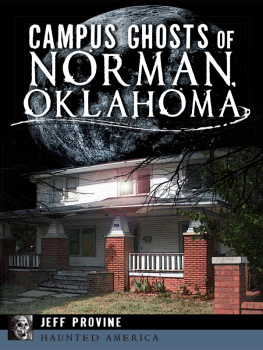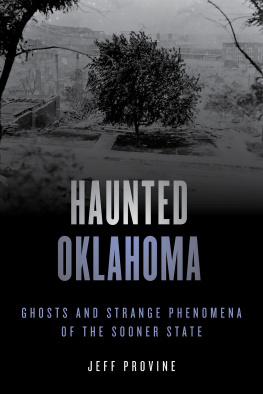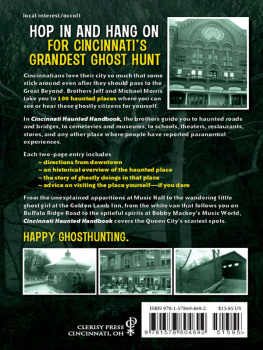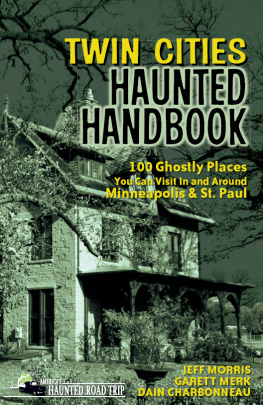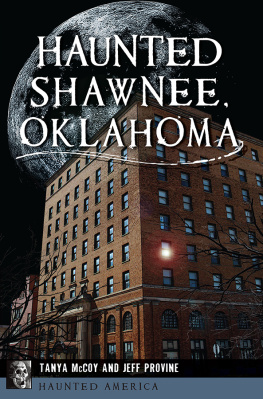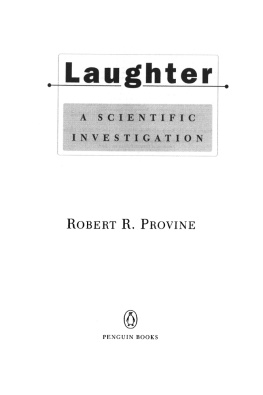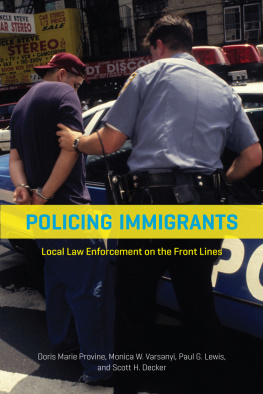Published by Haunted America
A Division of The History Press
Charleston, SC
www.historypress.net
Copyright 2016 by Jeff Provine and Tanya McCoy
All rights reserved
Unless otherwise credited, images are from the authors collections.
First published 2016
e-book edition 2016
ISBN 978.1.43965.762.1
Library of Congress Control Number: 2016939296
print edition ISBN 978.1.46713.681.5
Notice: The information in this book is true and complete to the best of our knowledge. It is offered without guarantee on the part of the author or The History Press. The author and The History Press disclaim all liability in connection with the use of this book.
All rights reserved. No part of this book may be reproduced or transmitted in any form whatsoever without prior written permission from the publisher except in the case of brief quotations embodied in critical articles and reviews.
For my parents, thanks for the stories.
Jeff
In loving memory of my dad, John L. McCoy, who never believed in ghosts but always believed in me.
Tanya
CONTENTS
FOREWORD
I arrived in Oklahoma City after growing up in Indiana, spending a couple years in Hollywood, marrying an Oklahoma girl in California and ending up in Tulsa in 1953. A friend who worked at WKY TV called me over for an audition in December 1955. After driving around to find the station downtown, someone pointed me to where it is today, located on Britton Road. Then, it was a lone structure with only a few houses around the tower and the transmitter building.
I was so surprised. I thought, This is the number one TV station in the country?
Once inside, I could see what a fantastic TV station it was. I got the job as staff announcer and moved to Oklahoma City in January 1956. Even after I settled in, there was still a wonderment that things were so seemingly far apart, kind of wide open, in the town physically. Prohibition was still in effect, so there were no open public bars at all. It was quite a difference after living in Indiana and California. But the people were so nice that it didnt take me long to get acclimated, and soon, I loved being here.
Im not sure that I was aware of any real horror genre in the city until I became Count Gregore hosting Shock Theater. It debuted on Saturday night, May 10, 1958, at 11:30 p.m. as late-night TV was getting its start. That was how I found out how big the fan base was for horror movies and me, the host.
We had a special Halloween event planned at Frontier City since it was still open with the Ghost Mine and Mystery Shack. There, we held a costume contest with the winners to appear on the show when we went on the air at 11:30 p.m. From 8:00 p.m. to 10:00 p.m., the crowd came out, and we shot the show outside in the front area of the TV station.
It was a very cold night, and on the way out to the park, I told my wife that this was such a dumb idea. No one would be there. Upon arriving, though, there were no parking spots. I was able to find just one inside the park. A family coming in spotted us and showed off their son swathed in white bandages as the Mummy. Beyond them, the park was so full of people everywhere that we had to get help from staff just to find the stage. Once it was over, we found out that the management estimated that there had been between four and five thousand people that night during that two-hour period. From then on, I was very aware that Oklahoma City has lovers of horror in abundance.
A diversified mixture of spooky things has expanded greatly since those days. I think there has always been a fan base for this, with the old classic movies that Hollywood produced over many years. Then television became so prominent, but the early days had limited network programming; local stations had to program much of the open hours of time. The old classic horror movies came back and were a smash hit. Today, there is a wide range of TV shows dealing in the occult, vampires and the paranormal. Walkthrough haunted houses have become the thing and are very successful in the market. It is said that Halloween decorations have now passed Christmas decorations for homes in sales and displays. Trick-or-treating, now more controlled and safer, is a huge event for families.
In Oklahoma City, making horror scary and fun is the thing.
John Count Gregore Ferguson
ACKNOWLEDGEMENTS
Special thanks go out to all those who allowed us to stop for a chat about local history and ghost stories. We would like to thank the friendly and helpful staff members at Bricktown Candy Company, Cattlemens Steakhouse, Langstons Western Wear, Mount Saint Marys High School, the Oklahoma City Zoo, Old Moore High School, Rose State College, the Skirvin Hilton, Tapwerks and Yucatan Taco Shop. Additional thanks go to George and Theresa Adams at the Paramount and Noir, Blake Behrens and Kyle Simmons at The Okay See, Lisa Escalon at the Overholser Mansion, Mike Gonzales at the Forty-Fifth Infantry Division Museum, Richard Mansfield at the Sooner Corral, Vicky Muhs at Gabriellas, Jesse Peeples at Deep Deuce Grill, Russ Tallchief and Christina Wolf at Oklahoma City University, Liz Wood at the Governors Mansion and Kale Epperson of Paranormal Investigations of Oklahoma. Also, thanks to Sue and Bill Bowlby, Jeff OHagan, Bradley Wynn and many others for their time and thoughtful words during interviews.
The first-person accounts in Haunted Oklahoma City are from the experiences of Tanya McCoy.
INTRODUCTION
HISTORY OF THE CITY
The word Oklahoma was coined during the negotiations of 1866 as new treaties were being determined between the Five Civilized Tribes and the federal government after the Civil War. The Choctaw Nation had sent its principal chief, Allen Wright, as part of the delegation, and when asked what the collective lands of the tribes could be called, he suggested Okla, meaning people, and homa, meaning red. The new word was adopted by all parties and soon became recognized around the country.
The Treaty of 1866 carried several stipulations, including granting railroad right of ways, upholding the U.S. Constitution and enforcing the sale of the less populated western lands, which would be used as future reservations. While more Native Americans were moved into Indian Territory, there remained nearly three thousand square miles of Unassigned Lands.
These lands were far from empty. For millennia, buffalo herds had roamed the area, which was dubbed the Osage Plains on maps. While the Osage in the north stood as the strongest force in the area, it was also visited by hunting parties of Comanches, Kiowas, Tonkawas and more. Even white men ventured into the area to explore, as Washington Irving recounted in a story of joining a buffalo hunt in present-day Moore, Oklahoma, in his famous book Tour of the Prairies. Jesse Chisholm worked to settle the area more permanently with one of his trading posts in 1858. It stood just east of the North Canadian River, where, today, it is crossed by Northwest Tenth, a ford said to be called Dead Mans Crossing, as a body was discovered there. The Civil War interrupted his settlement, but he reestablished it when the conflict had ended.
Chisholm was not the only one looking to colonize the plains. The Boomer movement began with David L. Payne, whose interpretation of the Homestead Act of 1862 stated that the Unassigned Lands were federal property available to settlers at 160 acres apiece. Legally, the area was set aside for future tribal use, but that did not stop Payne from starting an Oklahoma Colony company. Would-be settlers paid twenty-five dollars for a town lot in the future capital of the territory, and a two-dollar subscription entitled them to entry to the colony and 160 acres. Payne was estimated to have taken in over $100,000 in dues, though none of his colonies lasted more than a few weeks.




